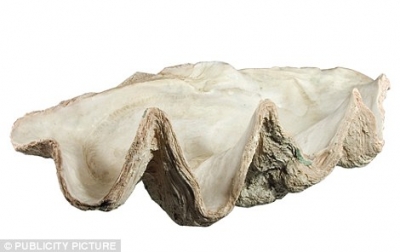
Clams very rarely create pearls, making the discovery of this gem off Palawan Island extremely rare. Most are made by oysters, but even then they occur in fewer than one in every 10,000 cases.
Giant clams - such as the one that produced this pearl -can reach four feet in length and weigh upwards of 500 pounds.
Natural pearls are formed inside the shells of molluscs as a defence mechanism against a potentially threatening irritant, such as a parasite. Despite popular belief, pearls rarely grow from a grain of sand.
The animal creates a pearl sac and secretes calcium carbonate to seal off the irritation. This secretion process is repeated many times, producing a pearl.
The jewel increases in size as each new layer of calcium carbonate is deposited. Saltwater pearls usually take two to three years to develop, but larger pearls such as the one held in Puerto Princesca would have taken far longer.
Searching for wild pearls is relatively safe today, but in the 19th century, the mortality rate for divers was a high as 50 per cent. They faced attacks from sharks, as well as the crippling affects of decompression sickness, known as the bends.
Source: The National Geographic
